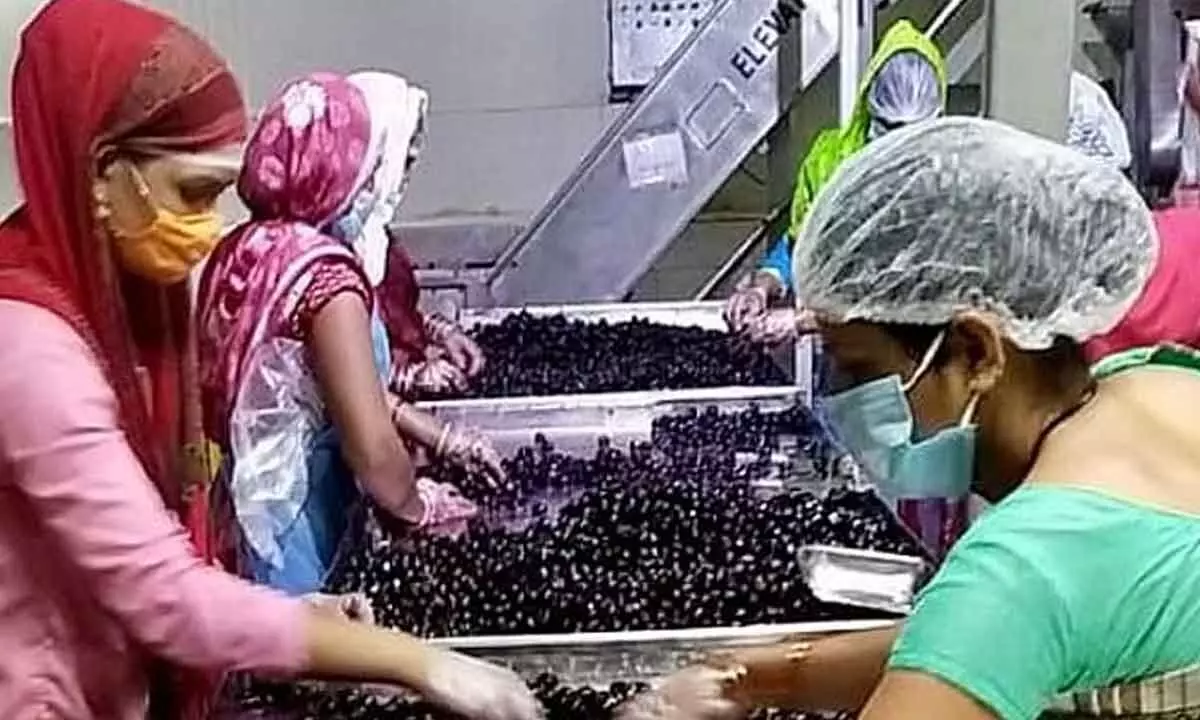Women’s tryst with wine sparkles with changing times these days
Around 27% of women are regular wine consumers while only 14% of men can claim the same
image for illustrative purpose

From vine to the glass, women continue to be under-represented in many wine-related fields. Although they are progressively gaining front-row jobs and positions, it is public knowledge that the percentage of men occupying influential positions greatly exceeds the percentage of women. However, things are changing: women are making a tremendous headway in areas that have been occupied by men, for instance as winemakers, sommeliers, critics, oenologists and wine influencers on social media.
Almost as an established tradition spread over to several centuries, women could only enter the world of wine on the death of their spouse (Joséphine de Lur-Saluces at Château d’Yquem or La Veuve Clicquot and her champagne). Newly widowed, they inherited wine estates of their husbands.
Thankfully, the 20th century has brought about a new awakening and many women took the spotlight in the world of wine. To un-exhaustively name some of them: Philippine de Rothschild, female pioneer integrating the very closed professional field; the renowned wine critic, Jancis Robinson and her World Atlas of Wine; Caroline Frey, ranked 28th of the 200 personalities of the wine world by the Revue des Vins de France; Argentine Susana Balbo, also known as “The Queen of Torrontés”; María Luz Marín, first female winemaker and winery owner in Chile; Brasilian Regina Vanderlinde, former International Wine and Vine vice-president. The United States is the largest wine consumer in the world, exceeding wine-producing countries like Italy and France, which long dominated the global market. According to the Beverage Information Group, 52 per cent of women prefer wine, compared to 20 per cent of men. Women make up 59 per cent of wine buyers.
While 27% of women are regular consumers, only 14% of men claim the same. The wine industry is expected to grow at a rate of 6.8% from 2022 to 2030, reaching $115 billion by 2030.
Consumers aged below 60 years have a lower share of wine consumption compared to the figures in 2007 while the 60+ population bands show growth.
While older consumers are paying more for premium wine, the younger ones are increasingly less engaged with the wine category. Around 35% of 21–29-year-old consumers drink alcohol but not wine. That number drops seven percentage points to 28% for individuals who are in the 50–59 years age-group. Of those consumers who left that group, two percentage points moved to being at least marginal wine consumers. Meanwhile, five percent are now abstaining from alcohol.
Linked to this preference is scientific research that suggests women of childbearing age are significantly more sensitive to aromas than men of the same age. According to a study conducted at Yale by Linda Bartoshuk, women are also twice likely than men to be supertasters, who have over 100 times more taste buds per square centimetre than normal tasters.
These unique female characteristics mean that women often prefer nuanced and subtle wines that don’t have very high levels of tannins and acidity. Many women do enjoy big, intense wines, but it is important that the wine be balanced and without overpowering levels of tannins or alcohol. Understanding women’s preferences is the key for producers to succeed in winning over them as consumers and building brand loyalty.
Another crucial consideration is that women drink wine differently. The concept of “wine o’clock” has boomed in recent years and consumer research shows that women often purchase wines to drink them on their own rather than pairing them with food. Prosecco has become especially popular since it is regarded as easy to drink and lower in alcohol compared to the heavier red wines. When women buy wine they may adopt the mentality of treating themselves to something nice after a long day.
This doesn’t mean that brands and producers should focus all of their marketing efforts solely on female wine consumers and drinkers.
Wine marketing needs to walk a delicate line to appeal to a wide variety of consumers. Label designs and marketing campaigns targeted directly at women can be very successful, but it can be helpful to have a range of different wines aimed at different types of consumers to ensure your brand has wide appeal.
Another important development is the rise of international wine competitions which are judged by an all-female panel.
The Women’s Wine & Spirits Awards is an annual competition held in London and judged by 100 leading female wine buyers, who are key decision makers in the industry. Medals won during this competition give female consumers the confidence to buy and fall in love with your products, safe in the knowledge that they have been tried and tested by professionals, who have been there and done that.

